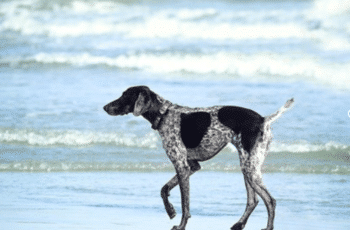Is your dog jumping up, chewing, barking, and doing other bad behaviors? Your dog is just trying to get your attention. Bad behavior is subjective; what one dog owner sees as lousy behavior may not be a problem to another dog owner. But bad behavior becomes a problem when it is repetitive, excessive, and starts disrupting the way we live our lives. In this case, we need to start nipping it in the bud before it gets out of hand and compromises our human and dog family’s health and safety.
Bad Dog Behaviors Can Include:
- Jumping Up
- Excessive Barking
- Whining
- Begging
- Digging
- Biting or nipping
- Excessive Leaking
- Destructive Chewing
- Chasing
- Leash Pulling
- Urine Marking
- Disobedience
- Fear of Noises
- Aggression
- Howling
- Mounting and Humping
- Separation Anxiety
- Escaping
- Eating Poop
- Being Overprotective of Family or Property
How to Stop Undesirable Dog Behaviors
1. Reinforce good habits to replace bad habits
When someone comes to your door, and your dog jumps all over them, you need to find a different way for your dog to greet your visitors. First, decide how your dog should behave when you have visitors; for example, you would want your furry pet to sit by your side as you welcome your visitor by the door. Then work on showing your dog to sit by your side and reward and praise your dog when he does. With this strategy, you teach him to replace the jumping up to a sit by your side, which brings rewards and praise.
2. Interrupt bad behavior and then show your dog how you want him to behave.
The best way to correct bad behavior is when they are doing it. You interrupt the behavior by getting your dog’s attention, saying “stop” in a firm, low pitch voice, and show him what you would like him to do instead. Reward and praise your dog when he does it.
3. Check that your puppy is not biting during play.
Puppies love to play, but they sometimes can get too excited that they nip you. Do not yell to put him in timeout; instead, stop playing, and ignore him for 5 to 10 minutes. Then resume playing and rewards and praise him for good playing.
4. Catch your dog in the process of misbehaving.
It is useless to correct a behavior well after they have done it. Your dog will not understand the connection between bad behavior and the correction. Catch the dog in the act and veer his behavior to the one you want.
5. Realize that even negative attention can reinforce negative behavior.
To get your attention, your dog will misbehave. So when you pay attention to them at this time, you are rewarding them. You need to ignore the bad behavior and redirect your dod to sometimes positive and reward and praise your dog after.
6. Show your dog NOT to chew on furniture.
Chewing is a common problem for dog owners. It is more prevalent in puppies than older dogs. The best time to stop this behavior is to catch in the act of chewing. Let say; you see him chewing on the edge of your couch, gently pull him away from your couch and give him a toy to chew. Reward and praise him when he chews the toy. Do not punish your dog for chewing your furniture or other items in your house because this will cause him to be anxious and fearful, which will only make his chewing worse.
7. Train your dog NOT to bark.
It is innate for a dog to bark. But when it becomes excessive, it is irritating and frustrating. When he starts barking, tell him “good work” for alerting you. If you find no reason for the barking, tell your dog “Be Quiet” while putting a treat in front of his nose. When he stops barking, wait a bit before rewarding him with a treat and praising him. When you repeat this, make the time for him to wait longer before giving the treat and praising him, If he barks again, repeat the command, “Be Quiet” and start over. Eventually, your dog will understand to bark only when needed.
8. Train your dog never to beg when people are eating.
If your dog is begging by the table as you are eating, ignore the dog entirely while you are eating, or offer your dog a toy filled with treats while eating. This will keep him distracted and keep him from begging at your table when you are eating. When you have finished eating, take your dog away from the table and offer a treat and praise for good behavior.
9. If you have children, understand that the responsibility does not lie entirely with your dog.
When you have your dog and children together in the same house, you need to train both. When a well-behaved dog bites a child, it usually is a defensive move. The child may have harmed the dog unknowingly. Teach your child the dos’ and don’ts with your dog while teaching your dog not to bite as well.
10. Train your dog to stop barking unnecessarily.
If your dog continuously barks at everything that moves when you are outside, consider a bark-control collar or device.
11. Training a dog not to bite.
Do not let your dog put his teeth on you. When your dog opens his mouth to chew on you, grab his snout, and say “No Bite.” You can also tap his nose at the same time. The aim is to frighten the dog but to let him know not to bite.
12. Train your dog not to run outside every time the door is opened.
Suppose your dog runs out as soon as you open the door. Teach your dog that he is not to go through the door until you tell him, “Outside.” Open the door and then say to him to “Sit” and then “Stay.” Reward and praise him and then tell him “Outside” as you pass through the door. This will take time. With practice and repetition, your dog will eventually learn it.
13. When your dog has a problem with aggression
Aggression that is not the result of physical or mental issues can be corrected once a dog learns that you are in charge. You are the leader of the pack. Assert your authority.
14. Show your dog not to chew on your belongings.
Put it away and out of reach from your dog if you don’t want your dog to chew on it. Don’t confuse your furry pet by giving him old shoes to chew. Your dog will not distinguish the difference between your new shoes and old shoes. They just smell your scent. So when they chew on your items, say “Stop,” take away the object and give him his chew toy instead. Keep doing this until he learns that it’s not acceptable to chew your personal items but can chew on his toys.
15. Show your dog not to dig in the yard.
Dogs dig holes for various reasons. One reason is for your dog to find a cool spot for a nap. Maybe you need to build him an area that provides shade. Catch your dog in the process of digging, say the command, “Stop,” and gently guide your dog to the shaded area.
16. Teach your dog not to dig under the fences.
Dogs will dig their way to escape. When you see this, divert his attention with a toy or another activity, reward, and praise him.
17. Teach your dog not to bury things in the yard.
Dogs will hide their p[possessions by instinct. The best way to stop this is not to allow reward and other items that are chewed or eaten outside the house. Let him have his toys because they will rarely bury playthings.
18. Train your dog not to steal food.
It is enough to teach our dog not to beg for food. It is also good to teach him not to steal food from the table. Train your dog by placing food on a table in front of you when he notices the food and comes to investigate. Say the “Stop” command and either a “Down” or “Sit” command. Then reward and praise him. Repeat this until you are confident your dog will not take the food, increasing your distance away from the table until you can leave the room. Know that this will take time and a lot of practice and patience on your end.
Paw Summary
Most unfortunate and undesirable behaviors can be overcome by issuing the appropriate basic dog commands, diverting their attention, showing them what is the productive and acceptable action or behavior, and then rewarding and praising them afterward. It takes time, practice, and repetition. But they are worth it; we are worth it.
Addressing negative behaviors early is vital because it will ensure years of loving friendship and companionship with our furry family.
Source
Dog Training, Tips, Tricks, and Techniques for Training Man’s Best Friend. Kindle ed.



yK25bcjFQyLB
174810 916495Hi there! I could have sworn Ive been to this internet site before but soon after reading by way of some with the post I realized it is new to me. Anyhow, Im surely glad I identified it and Ill be book-marking and checking back often! 963315